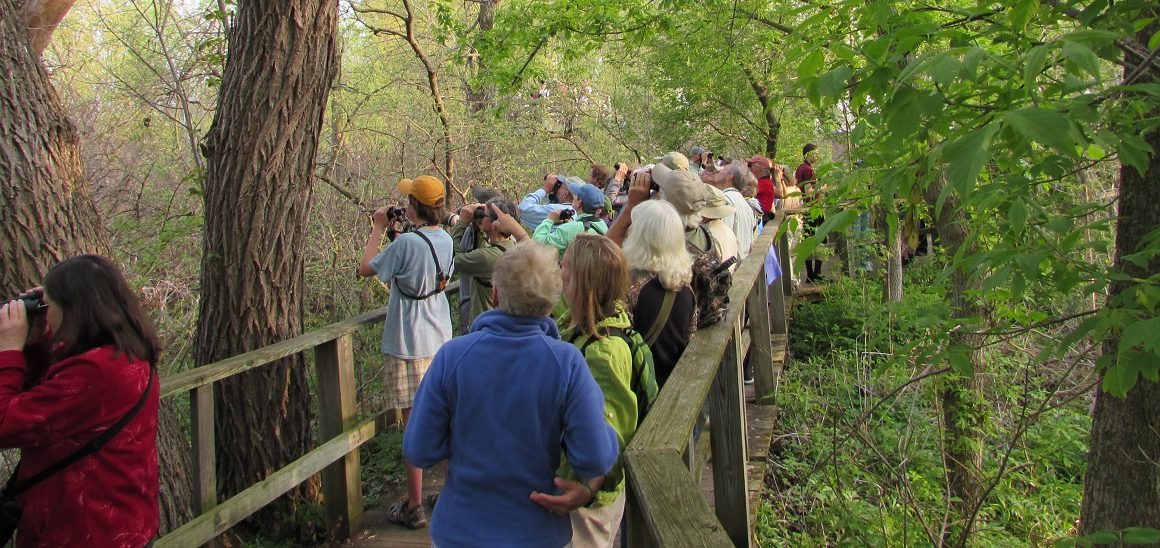
I have previously written about the U.S. Fish and Wildlife Service’s estimates regarding the number of birders in the United States. The most recent report was issued in December 2019 and it stated that there were 45 million “birders,” of which 39 million were “around-the-home birders” and 16 million were more active “away-from-home” birders who traveled at least a mile to see birds. Thus, the report concluded that 18% of all Americans are “birders.”
Who qualifies as a birder? According to the report:
To be counted as a birder, an individual must have either taken a trip one mile or more from home for the primary purpose of observing birds and/or closely observed or tried to identify birds around the home. Thus, people who happened to notice birds while they were mowing the lawn or picnicking at the beach were not counted as birders.
Of course, there are many other possible definitions of “birder” so accurately estimating the overall number is more art than science. Based on analysis of other information (magazine subscriptions, Facebook “likes,” field guide sales, organizational memberships, etc.), I believe that FWS wildly overestimates the number of birders. I previously concluded: “The data suggests to me that there are maybe a million ‘birders’ — people who would not be surprised to be classified as birders.”
Now there is some new data, and like much of the high-quality data regarding birding, it is from eBird.
Until recently, as far as I could tell, the only information from eBird regarding the number of eBirders was the total number of worldwide eBirders, which was not particularly helpful in estimating the number of U.S. birders. But now eBird displays the number of eBirders in the United States (and in every state). Thus, we now have more granular information regarding American eBirders.
Based on some back-of-the-envelope calculations, approximately .0015% of Americans are eBirders (about 505,000 eBirders in a country of approximately 330 million). Approximately 38 million checklists submitted by about 505,000 eBirders means the average American eBirder has submitted around 75 checklists.
Incidentally, I am assuming an eBirder is someone who has signed up for an eBird account and has submitted at least one checklist in the United States. (Or at least most of the United States, as eBird erroneously considers Puerto Rico and several other U.S. territories to be separate countries.) The number could also be based on the address submitted during sign-up. In any event, it seems unlikely that different methods of determining an American eBirder would change the overall numbers that much.
Of course, this information is not perfect. The American eBirder number might include foreign tourists who submit checklists while on vacation. And some eBirders may no longer be birders, or may never have been birders, or may have died.
Nevertheless, with this data, we can make some estimates regarding the total number of American birders based on a single variable: what percentage of birders are eBirders?
Of course, eBird is now ubiquitous in birding and some fraction of all birders are eBirders. That faction may be unknown, but I think many birders have their own estimates. There is the issue regarding the definition of a “birder” and others, but even rough estimates might shed some light on the larger question.
- If 1in 20 birders is an eBirder (5%), there would be about 10 million American birders.
- If 1 in 10 birders is an eBirder (10%), that would mean about 5 million birders.
- If 1 in 5 birders is an eBirder (20%), that would pencil out to about 2.5 million birders.
- If 1 in 4 birders is an eBirder (25%) would be approximately 2 million birders.
- If 1 in 3 birders is an eBirder (33%), would be about 1.5 million birders.
- If half of all U.S. birders are eBirders, that would mean about 1 million birders.
- And if the percentage is 50% or more, that would results in less than a million birders.
Note that all of these numbers are tiny compared to the FWS estimate of 16 million active “away-from-home” birders.
This is just educated guesswork, but my impression (and it is little more than speculation) is that about 25-33% of birders are eBirders, and that the percentage increases as age decreases, meaning younger birders are more likely to be eBirders. If I had to guess about the directional error of that estimate, it would be that it is too low and that a higher percentage of birders are eBirders. And I think the percentage will go up in the future.
The 25-33% estimate would mean about 1.5-2 million birders, which is substantially less than FWS estimates, but broadly consistent with my earlier estimates.











Leave a Comment